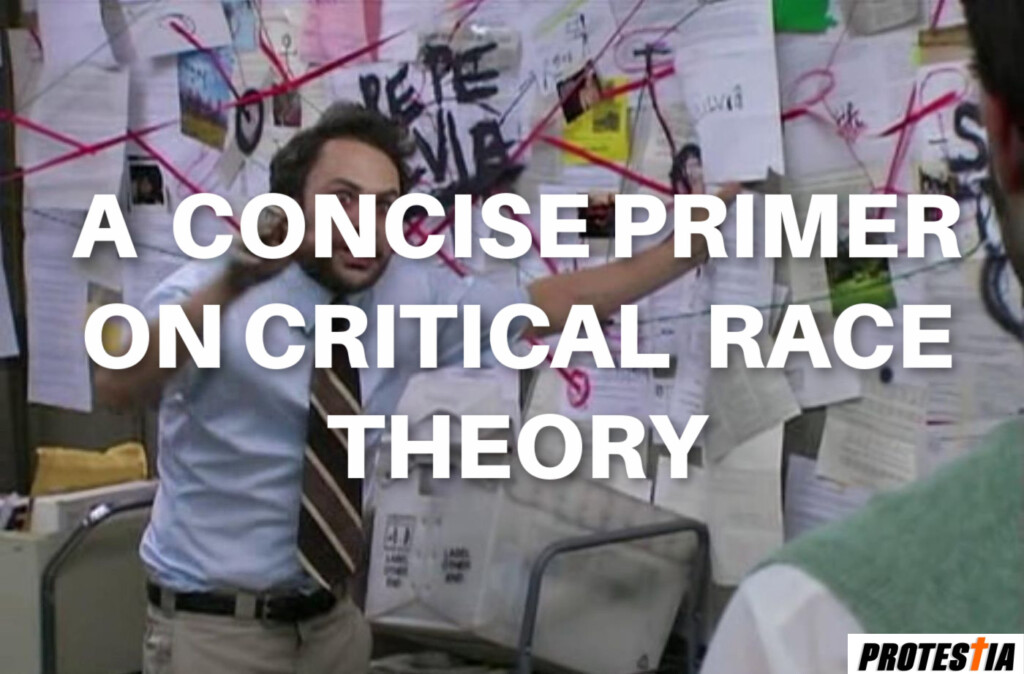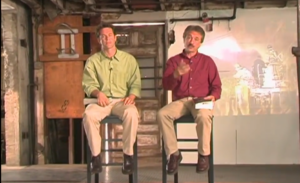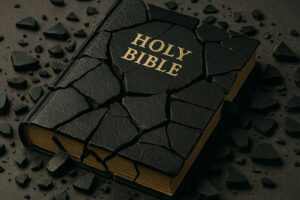One state is shocked and dismayed that the state’s Executive Director for America’s largest Protestant denomination is supporting an extreme left-wing ideology.
(Montana Daily Gazette) One might have thought that support for the most outrageously leftist leviathan devouring Western Civilization would be supported primarily by liberal mainstream denominations like the ELCA, Episcopalian, or United Church of Christ. But a Twitter thread demonstrates that the head of the Southern Baptist Convention in Montana, Barrett Duke, affirms at least some of the tenets of Cultural Marxism, Identity Politics, and Intersectionality – commonly known as Critical Theory.
BACKGROUND
Currently, unbeknownst to some, there is a civil war waging in America’s largest Protestant denomination. Although the denomination thought that it had exiled leftists during the so-called Conservative Resurgence beginning in 1979, recent years have demonstrated that many of those leftists burrowed underground in the denomination’s institutions and have risen to prominence in what amounts to being a 30-year coup d’etat over 14-million membership.
At the heart of the Conservative Resurgence were two issues, abortion and female clergy. At the beginning of the Resurgence, the SBC and its institutions were largely for both and passed resolutions affirming both. But beginning with the presidency of Adrian Rogers, these liberal elements were quieted and thought to be properly dispatched through more than a decade of infighting. The Southern Baptist Convention soon stood tall and true as not only the largest Protestant denomination, but the most conservative (although the Presbyterian Church of America, Lutheran Church Missouri Synod, and other outliers certainly exist).
If you fast-forward to today, however, you will find prominent Southern Baptists like its president, JD Greear, and its influencers (Mark Dever, Thabiti Anyabwile aka Ron Burns, Jonathan Leeman, Beth Moore, etc) claiming that voting Democrat is an acceptable moral choice). In fact, Mark Dever is a registered Democrat, something simply unimaginable twenty years ago in the SBC. The denomination’s seminary presidents, Albert Mohler, Daniel Akin, Jason Allen, and three others seem to all be sufficiently “woke,” and have forbidden their employees from signing The Dallas Statement on Social Justice and the Gospel, which explicitly rejects the Social Gospel which – as of late – has been renamed “Social Justice” by the liberals promoting it. Daniel Akin at Southeastern Baptist Theological Seminary hired a notorious and gay-affirming leftist who says abortion is not murder, Karen Swallow Prior, and has hosted “Malcolm X Read-Ins” in celebration of Critical Theory. They also took time to celebrate James Cone, the founder of Black Liberation Theology, which teaches that Jesus is black and the Bible is about identifying with the oppressed.
A race-baiter and Democrat activist who has little in common with the Southern Baptist Convention – Dwight McKissic (he is also for female clergy and is a practicing charismatic) – promoted “Resolution 9” at the denomination’s 2019 gathering, which calls Critical Theory a “helpful analytical tool” to help Christians understand race. The vote, which was likely invalid and was pushed upon “messengers” (delegates) to the SBC by leadership, afraid a stall or rejection on the proposal would lead to accusations of racism by the press, which was hovering over the process.
After more than a year of explaining to Southern Baptists what Critical Theory is, grassroots activists within the denomination have finally got the attention of SBC leaders that what they endorsed is in fact Marxism and a specific strain called Cultural Marxism. In an about-face, the six SBC seminary presidents signed a statement denouncing Critical Theory – which they all promoted heavily at the 2019 SBC annual meeting (note: they are still promoting, endorsing, and hiring Critical Theorists in their institutions and actively firing those who oppose Critical Theory).
WHAT IS CRITICAL THEORY? Buzz-words are in bold.
Critical Theory was derived in the 1930s from the Western-Marxist philosophy of Karl Marx and Sigmund Freud, commonly called “The Frankfurt School.” This school of thought came from ex-pats from Hitler’s Germany just prior to World War II and interestingly, merged the Nazi’s fixation on racial categories with the Soviet Empire’s economic Marxism. Relocating in New York City and in particular, Columbia University, in 1935 to avoid Hitler’s wrath (most of the philosophers were of Jewish descent) the group moved back to West Germany in 1953.
Because of the influence of Adolph Hitler, whose Final Solution was greatly influenced by Darwinism, Critical Theorists developed their philosophy with a similar fixation on race (albeit, far less anti-semitic). Combined with Collectivism popularized among the Soviets (as opposed to Individualism in the West), the Marxists claimed that regular (economic) Marxism could not thrive in a capitalist nation like the United States because of class mobility. In short, in a nation where everyone wants to be – and can become – rich, you can’t get the poor to hate the rich and therefore no robust struggle between the proletariat and bourgouise exists.
Their solution was simple; instead of dividing people by economic class, Marxism can accomplish its goals by dividing people by racial class. Cultural Marxism was born, and soon Marxists in the West began to emphasize cultural distinctions based not upon wealth, but skin color or ethnicity. This would provide the racial agitation, civil disruption, and societal disunity necessary to “overthrow the current power-structure.”
Critical Race Theory, on the other hand, was a spin placed upon “regular” Critical Theory in American law schools in the 1980s. Essentially, this philosophical tweak was invented out of an attempt to explain why African Americans are incarcerated at higher rates than white Americans. Looking at every possibility for this disparity except that black people commit a disproportionate amount of crime (if Critical Race Theory were a religion, then that notion would be a heresy), the Critical Race Theorists hypothesized a secret and conspiratorial “systemic racism” run rampant in American society.
Because the 1960s Civil Rights Movement had already overturned Jim Crow laws and every American – regardless of ethnicity – was equal already under the law, Critical Race Theorists had to claim that racism was secret, hidden, or invisible. Concepts like “micro-aggressions” developed (the belief that subtle cues and subliminal judgments oppress minorities) to explain why racism was supposedly the cause of every societal ill.
But how do you prove “micro-aggressions” (these include singing, “I’m Dreaming of a White Christmas,” asking for extra cream in your Starbucks, and appropriating Halloween costumes from other cultures)? Because the “systemic racism” asserted by Critical Race Theorists is largely hidden, it’s necessary to believe that every white person is racist and every black person is oppressed (oddly enough, Critical Race Theorists consider Asians and Jews to be “white” because their ethnic demographics generally thrive in America).

Every white person is a “racist” according to Critical Race Theorists because of “White Guilt,” the notion that by the virtue of being white, they are guilty of whatever injustice their ancestor perpetrated upon darker-skinned peoples decades or centuries ago. And by the virtue of being white, every white person has privileges, wealth, and opportunities that black people do not have, which is called “White Privilege.”
Caucasians that don’t agree that they are secretly or closetedly racist are accused of having “White Fragility,” meaning that they are too emotionally fragile to consider the possibility that they are secretly racist.
Because micro-aggressions cannot be proven and “systemic racism” cannot be empirically demonstrated, Critical Race Theorists demonstrate it anecdotally. Borrowing from a tenet of Third Wave feminism, Critical Race Theorists engage in “story-telling,” which is when hard evidence for systemic prejudice is replaced by anecdotal stories or outlier incidents of racism. This is why events like the killing of Trayvon Martin or George Floyd are used so powerfully by Critical Race Theorists; anecdotal accounts and statistical outliers are necessary to prove their point. However, even here it gets strange. Trayvon Martin was killed by a Hispanic man, George Zimmerman, who according to Critical Race Theory is considered “black” and an oppressed minority. However, because Zimmerman was a homeowner in a nice neighborhood and successful in his career, he was characterized as “white” by Critical Race Theorists who see race not as a biological reality, but as a social construct. Similarly, George Floyd was killed by four officers – and two were ethnic minorities. But because they were police officers, the Asian and Hispanic officers were deemed to be a part of the oppressive “power structure” and therefore considered “white” by Critical Race Theorists.
It’s important to realize that Critical Race Theory is a misnomer in that ethnicity is not all that is considered. Intersectionality is an add-on to Critical Race Theory and basically assigns victimhood points to people who are members of multiple oppressed identity groups. For example, women are considered a minority (statistically, they are not in the minority) as well as homosexuals and ‘transgender’ people (who they call aptly, “sexual minorities”), the disabled, and students. But some people – like a disabled black lesbian – is more oppressed than, for example, a disabled but heterosexual Hispanic man. This novelty is why you see fraudulent claims to membership in oppressed identity groups; Elizabeth Warren claimed to be a Cherokee Indian, Racheal Dolezal claimed to be black, and millennial women who profess to be lesbians have a higher pregnancy rate than do their counterparts who profess to be heterosexual. Simply put, it is advantageous to identify as oppressed.
Other buzzwords include diversity (which only applies to things like skin color or sexual behavior, not ideology or religion), inclusion, and equity (a codeword for the redistribution of wealth), forming the acronym D.I.E. Generally speaking, solutions to class disparity is wealth-redistribution, larger government, and a transfer of privilege from one class of people to another – often under the guise of environmental concerns caused by industrialization and capitalism (the greatest inequity, according to Critical Race Theorists, is that between the First World and Third World).
Do not confuse Critical Race Theory with an appeal against racism. Critical Race Theory, by its very nature, is racialist at best and racist at worst. Dr. King and the civil rights leaders of the 20th Century taught the notion of “color-blindness,” that we should not judge people by the color of their skin but by the content of their character. But for Critical Race Theorists, color-blindness is supposedly racist and ethnicity (or victimhood identity) is all that matters.
The term “anti-racism,” for example, was invented by Critical Race Theorist, Ibram Kendi, who explained, “To be anti-racist is to be anti-capitalist. To be anti-capitalist to be anti-racist.” These aren’t good-hearted attempts at racial harmony; these are well-orchestrated attempts at racial disharmony meant to accomplish a Marxist end-game.
BARRETT DUKE, LEADER OF MONTANA’S SOUTHERN BAPTIST CONVENTION, SUPPORTS THESE RADICAL CONCEPTS.
Responding to Dwight McKissic, the radical Democrat agitator in the SBC, Duke took to Twitter to find a compromise with with the Marxists and salvage Critical Race Theory as a helpful analytical tool. See below.

One has to wonder what exactly Duke thinks are aspects of Critical Theory that are compatible with the Southern Baptist doctrinal statement (or the Bible). Which part of Nazi-infused, race-based Marxism is compatible with a Christian worldview? What about Critical Race Theory – or the concepts therein – can “we agree on”?
With more than 100 Southern Baptist Churches across the State of Montana, it should be of grave concern that its head is on the wrong side of the issue on Marxism, racialism, and Critical Theory. Will Montana’s Southern Baptist Church “go woke” with the rest of the mainstream denominations that liberalized in the mid-20th Century?
If you would like to call Barrett Duke to speak some sense to him, you can do so at the Montana Southern Baptist Convention headquarters at 406-252-7537. Should he tell you that he does not support Social Justice or Critical Theory, please ask why he has yet to sign the Dallas Statement on Social Justice and the Gospel.
A call for comment to Barrett Duke was not returned by the time of publication.
Editor’s Note. This article was written by JD Hall and published at Montana Daily Gazette. Reposted in its entirety with permission. Title changed by Protestia.













One response to “A Concise Primer on Critical Theory+ SBC Head Raises Eyebrows”
This is great, JD. Thanks.